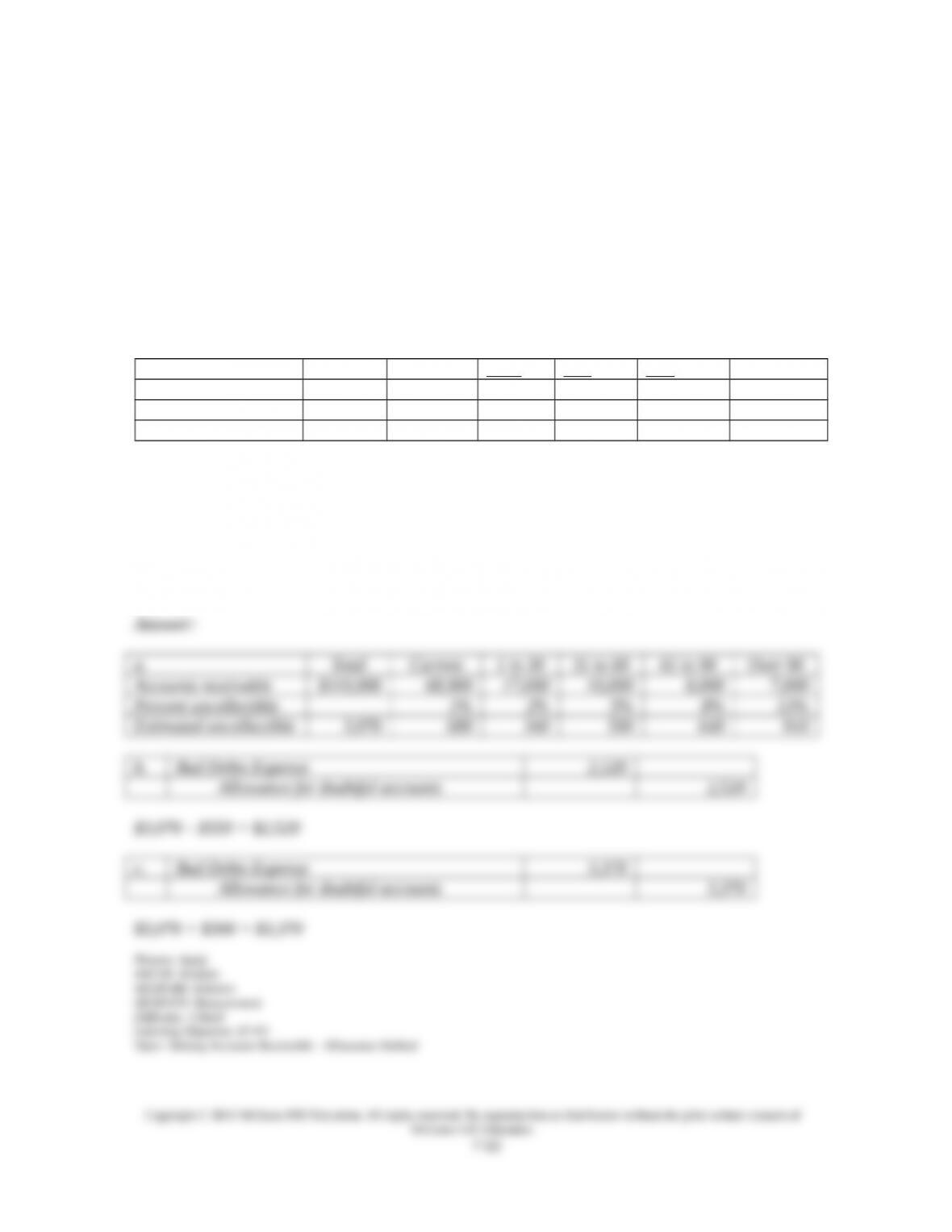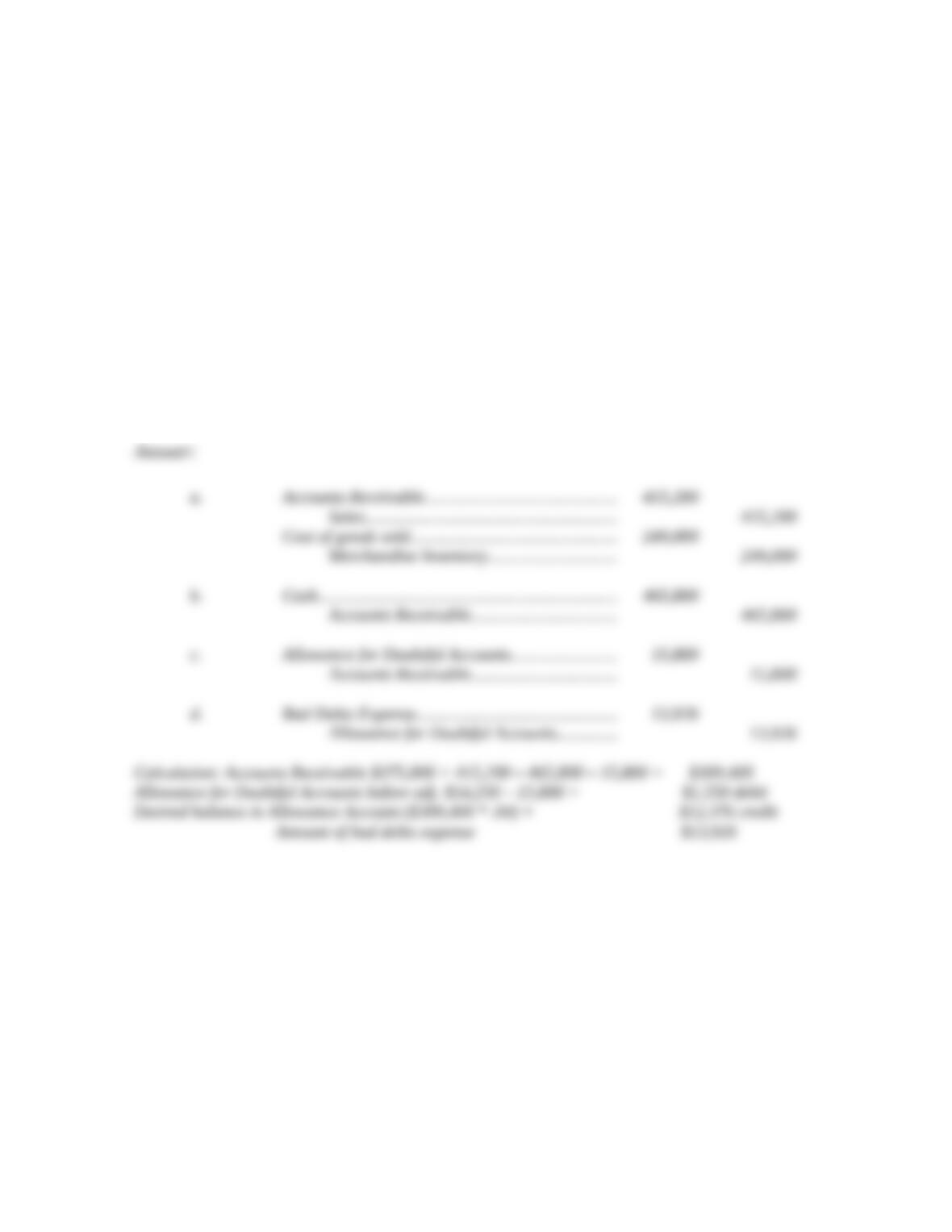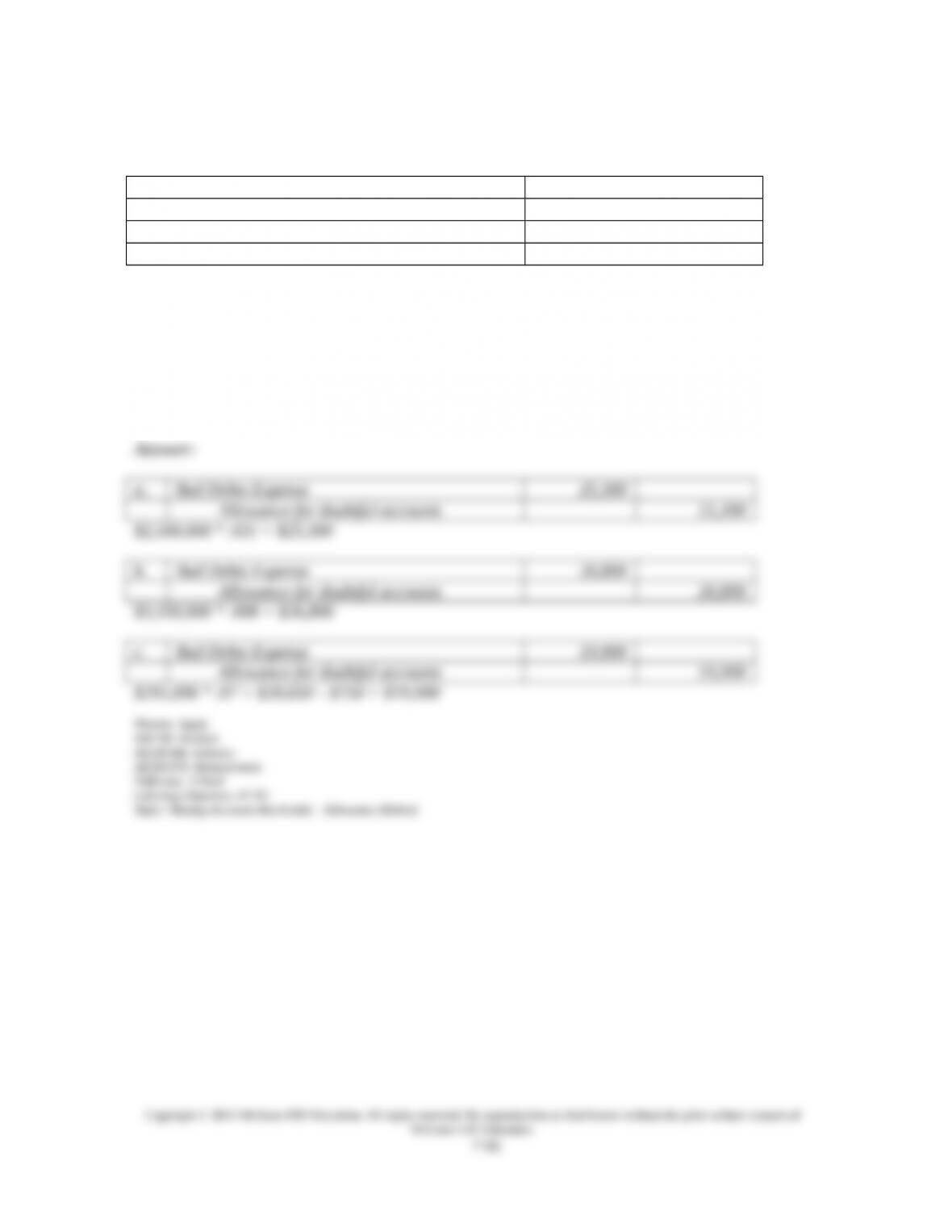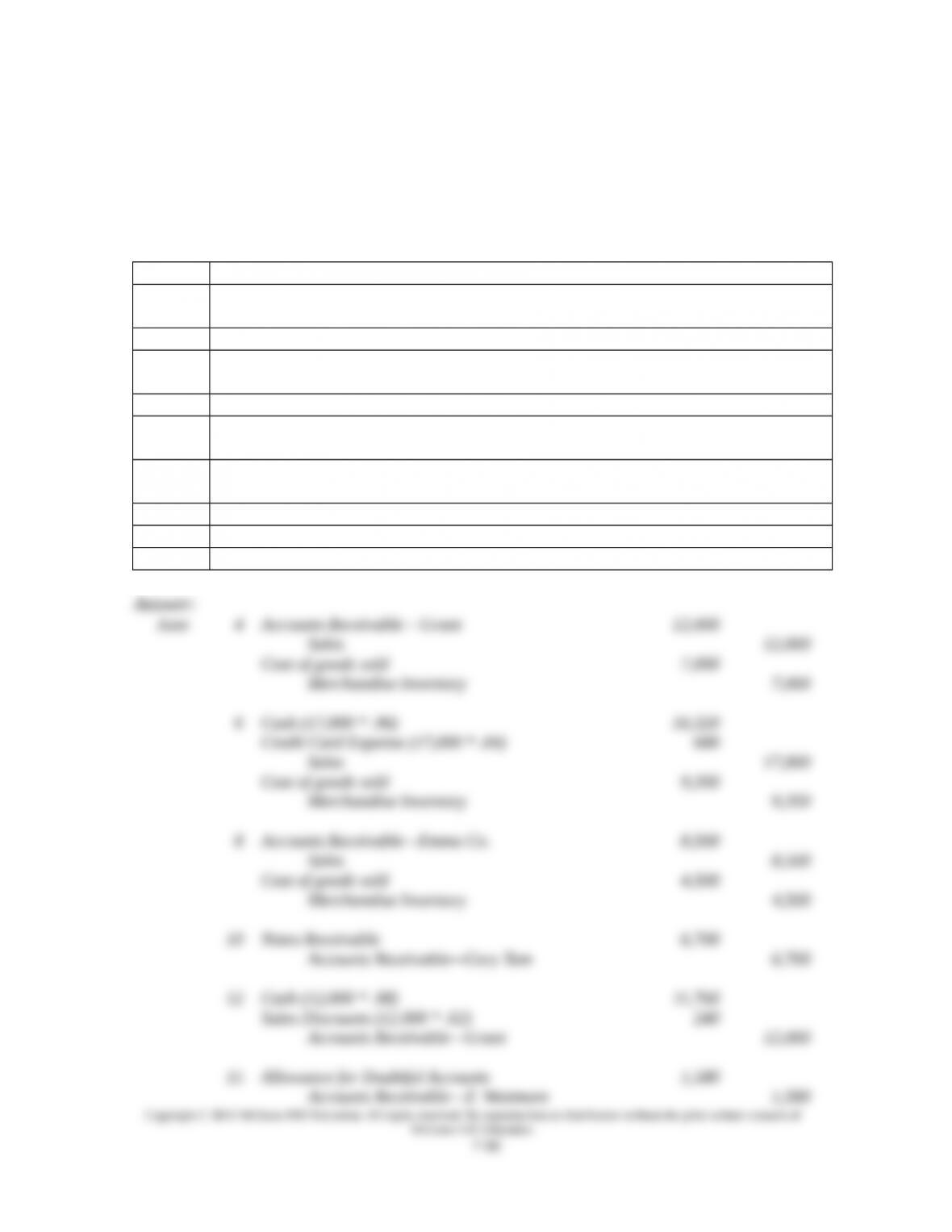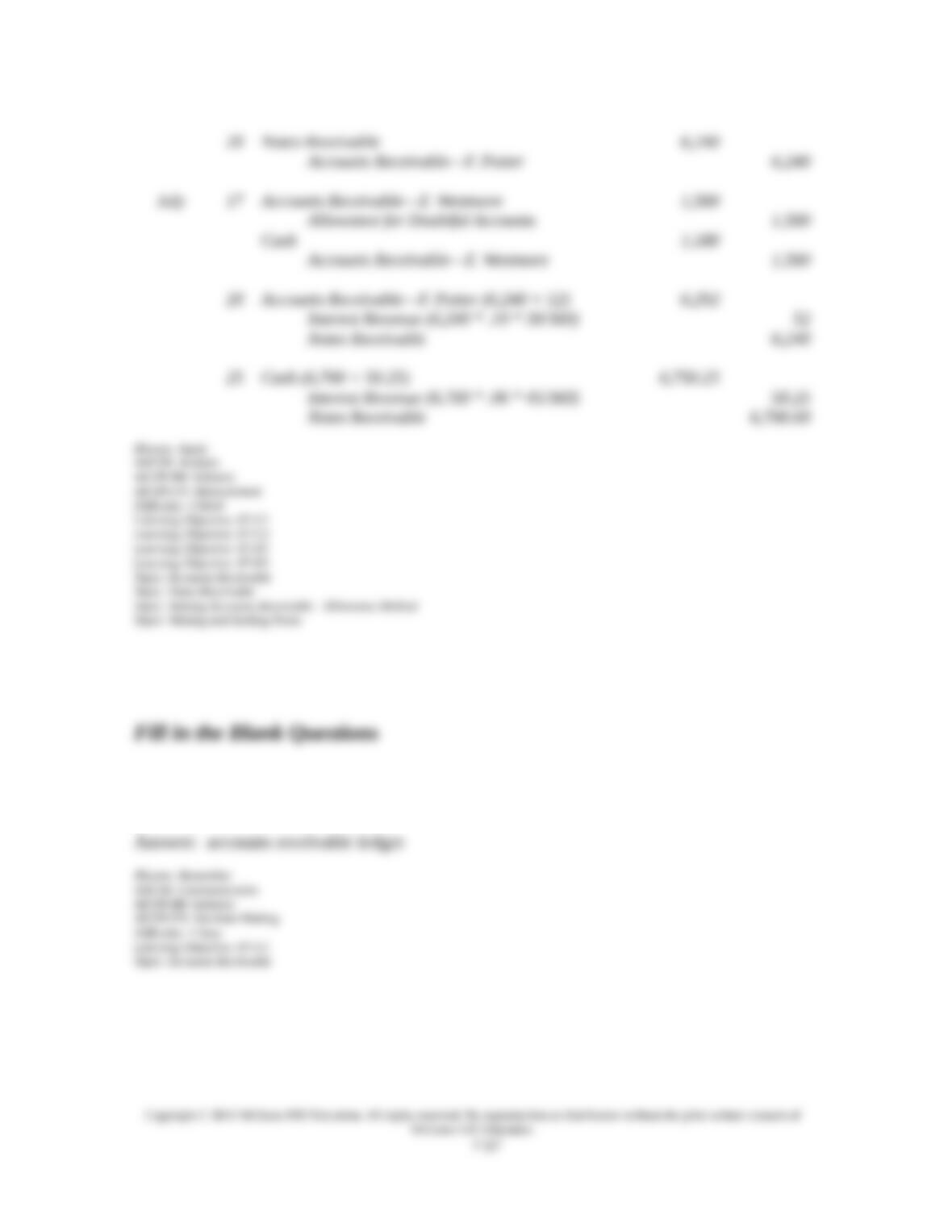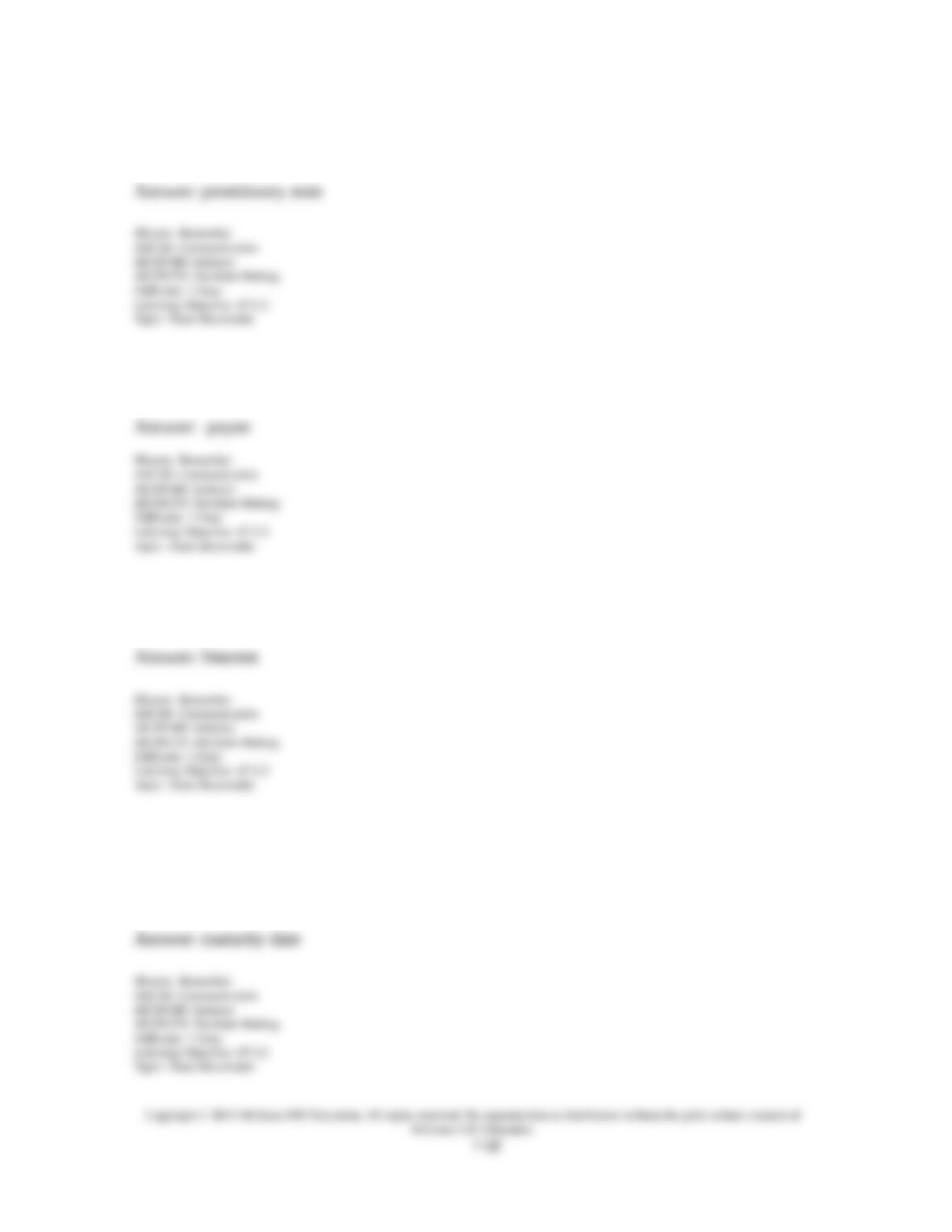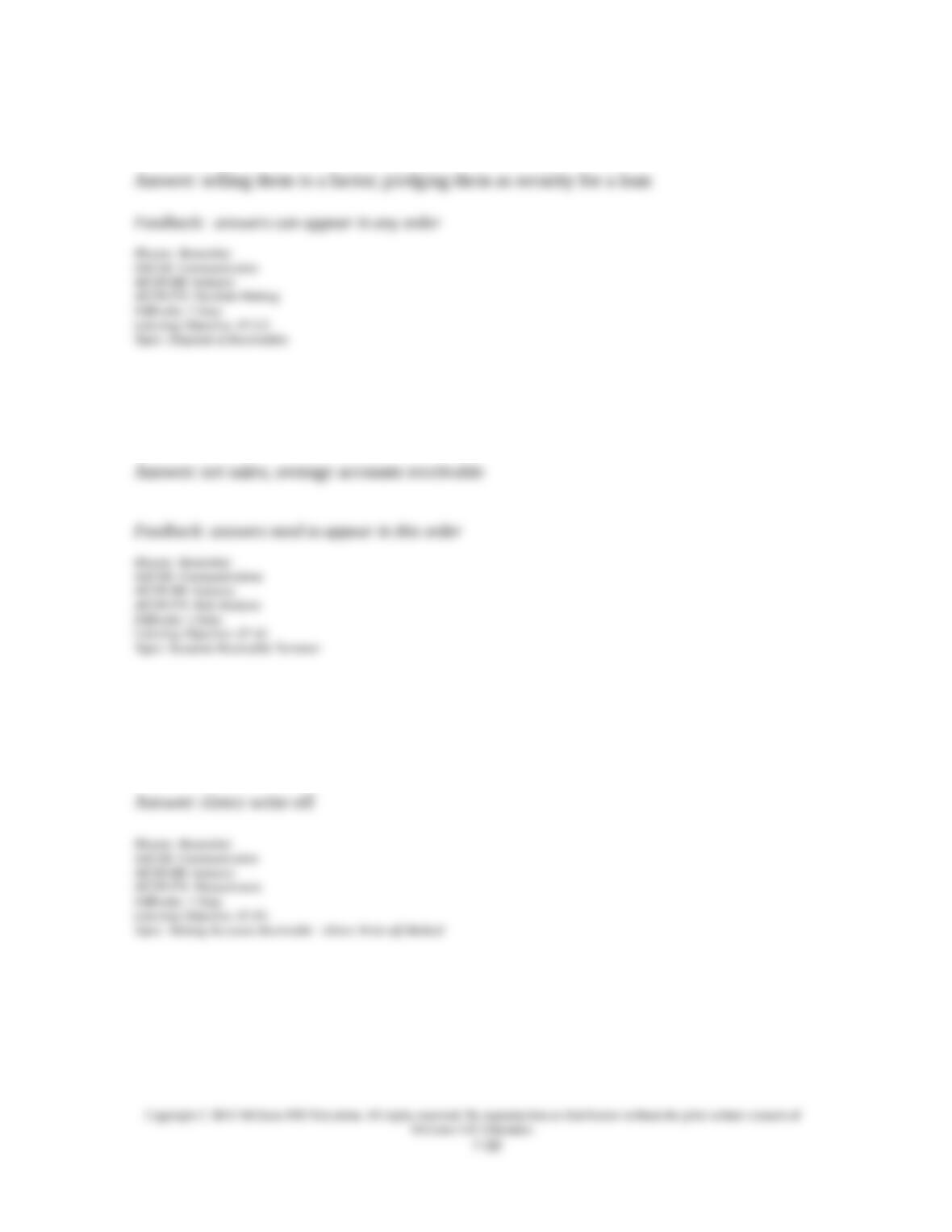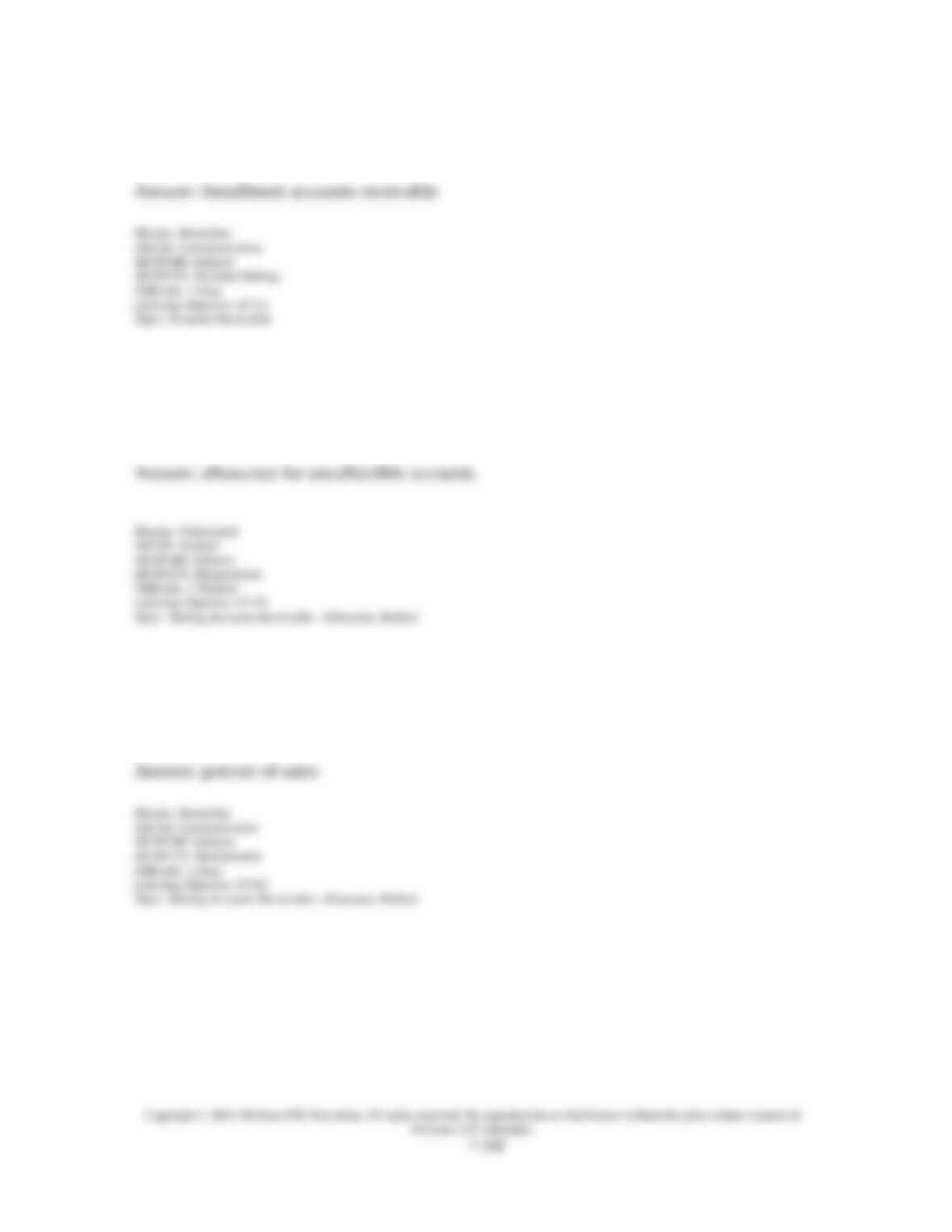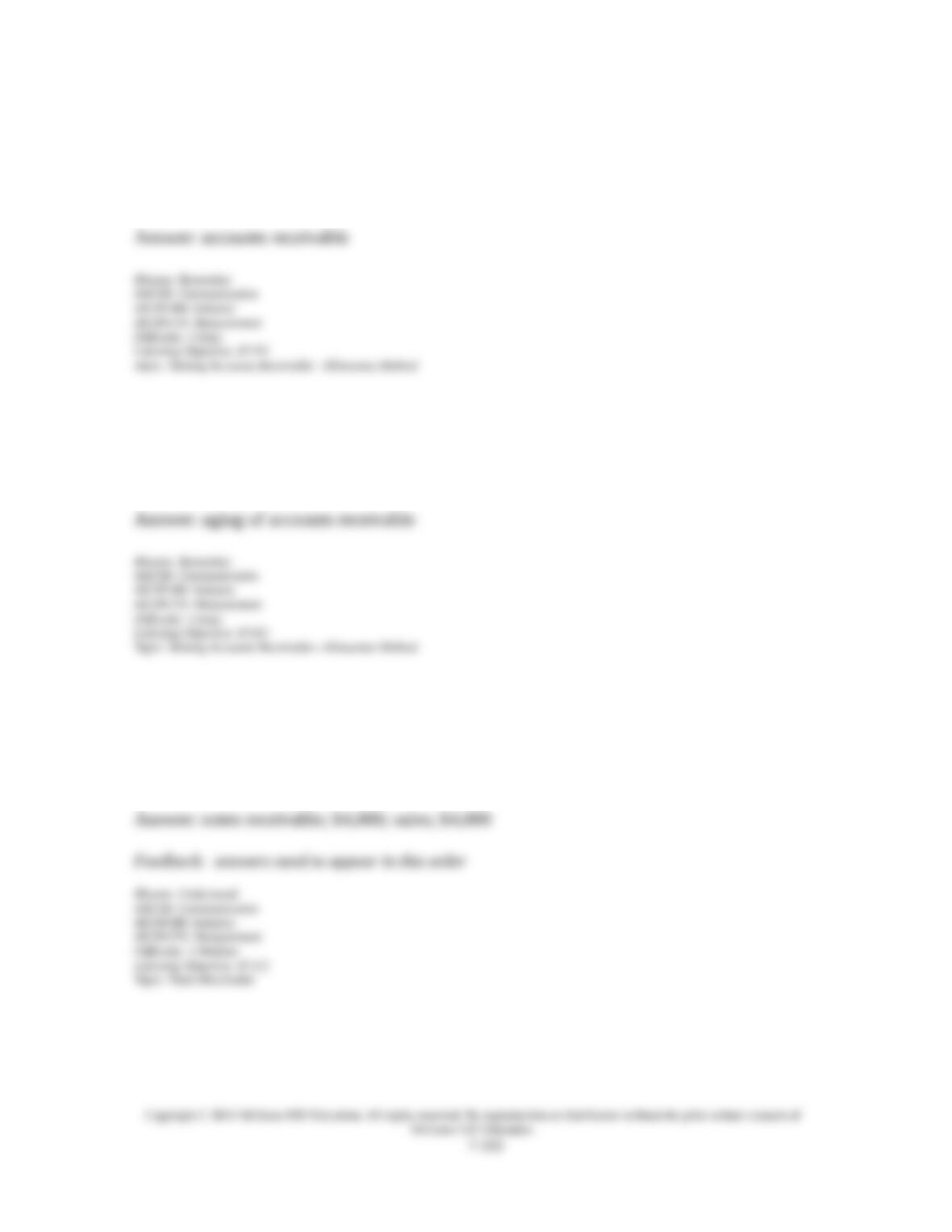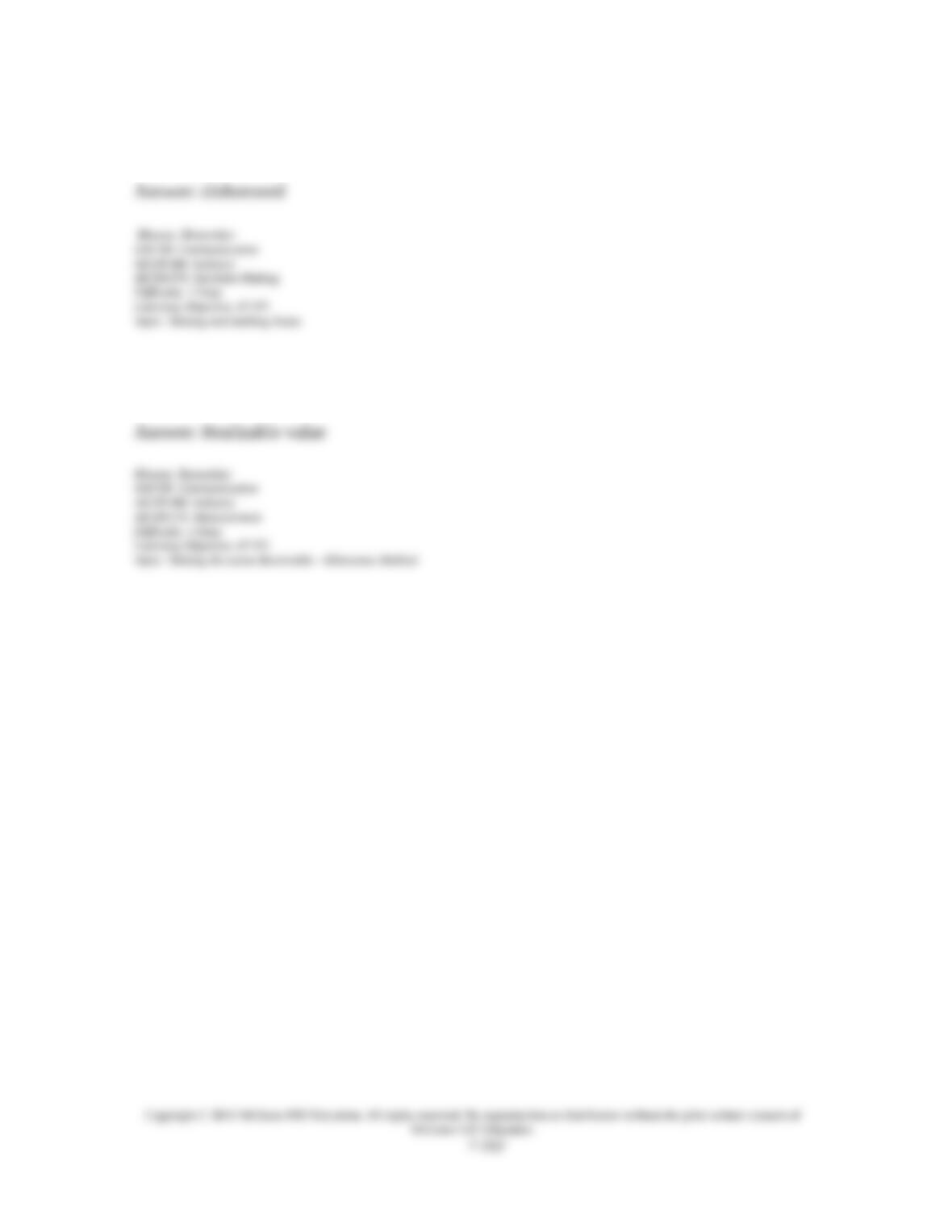124. The following selected amounts are reported on the year-end unadjusted trial balance
report for a company that uses the percent of sales method to determine its bad debts expense.
Accounts receivable $435,000 Debit
Allowance for Doubtful Accounts 1,250 Debit
Net Sales 2,100,000 Credit
All sales are made on credit. Based on past experience, the company estimates 1% of credit
sales to be uncollectible. What adjusting entry should the company make at the end of the
current year to record its estimated bad debts expense?
A. Debit Bad Debts Expense $19,750; credit Allowance for Doubtful Accounts $19,750.
B. Debit Bad Debts Expense $15,225; credit Allowance for Doubtful Accounts $15,225.
C. Debit Bad Debts Expense $22,250; credit Allowance for Doubtful Accounts $22,250.
D. Debit Bad Debts Expense $7,350; credit Allowance for Doubtful Accounts $7,350.
E. Debit Bad Debts Expense $21,000; credit Allowance for Doubtful Accounts $21,000.
125. On February 1, a customer’s account balance of $2,300 was deemed to be uncollectible.
What entry should be recorded on February 1 to record the write-off assuming the company
uses the allowance method?
A. Debit Bad Debts Expense $2,300; credit Accounts Receivable $2,300.
B. Debit Allowance for Doubtful Accounts $2,300; credit Bad Debts Expense $2,300.
C. Debit Allowance for Doubtful Accounts $2,300; credit Accounts Receivable $2,300.
D. Debit Bad Debts Expense $2,300; credit Allowance for Doubtful Accounts $2,300.
E. Debit Accounts Receivable $250; credit Allowance for Doubtful Accounts $2,300.



























































































